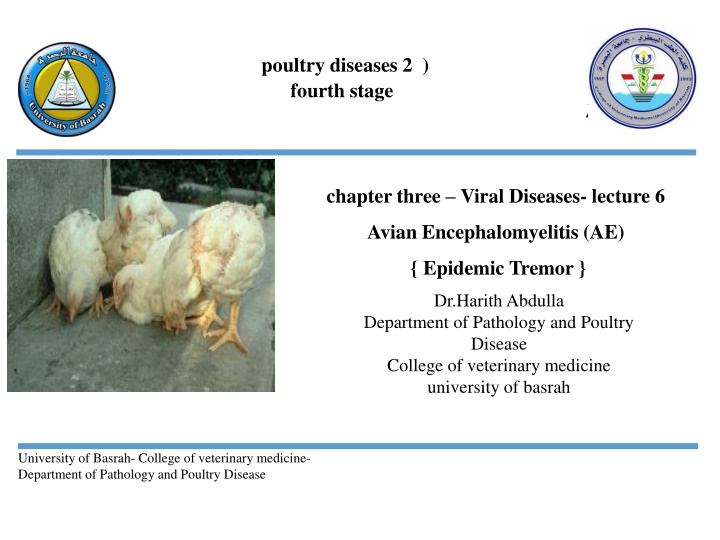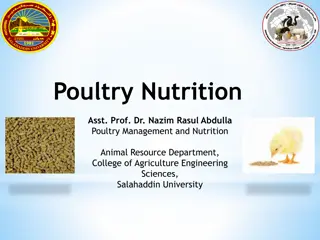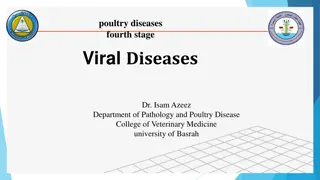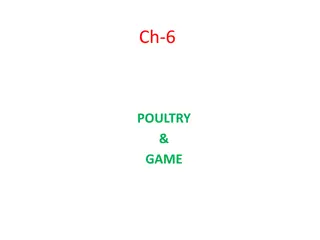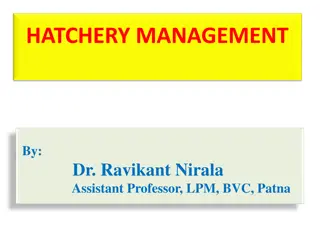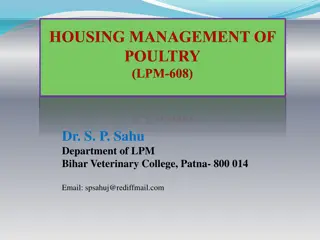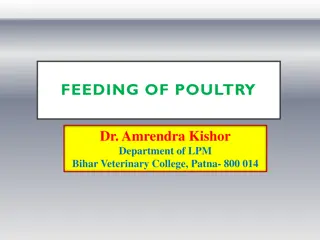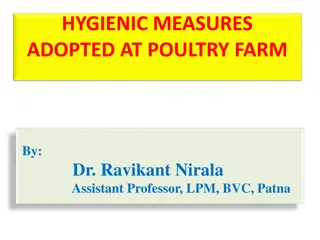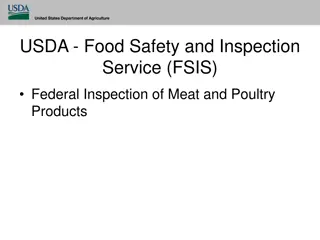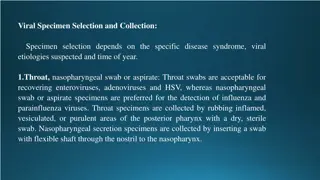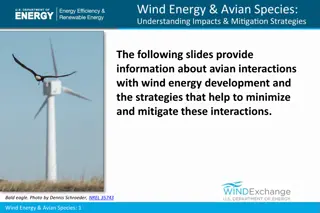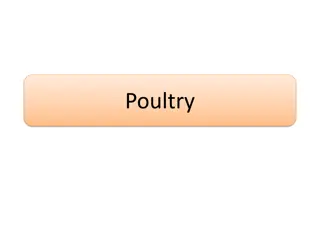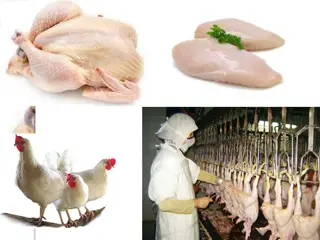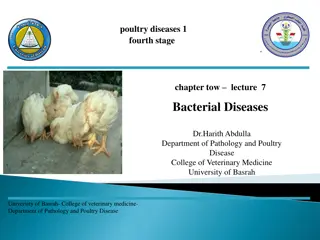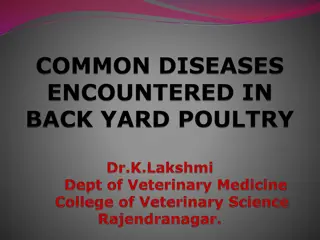Avian Encephalomyelitis (AE) - Lecture on Viral Disease in Poultry
Avian Encephalomyelitis (AE), also known as Epidemic Tremor, is a viral infection affecting young chicks and laying hens, characterized by ataxia, tremors, and paralysis. This disease primarily targets the central nervous system of chickens, pheasants, turkeys, and quail, transmitted through infected hen eggs. Learn about its epidemiology, clinical signs, diagnosis methods, and post-mortem lesions in this informative lecture by Dr. Harith Abdulla from the University of Basrah's College of Veterinary Medicine.
Download Presentation

Please find below an Image/Link to download the presentation.
The content on the website is provided AS IS for your information and personal use only. It may not be sold, licensed, or shared on other websites without obtaining consent from the author.If you encounter any issues during the download, it is possible that the publisher has removed the file from their server.
You are allowed to download the files provided on this website for personal or commercial use, subject to the condition that they are used lawfully. All files are the property of their respective owners.
The content on the website is provided AS IS for your information and personal use only. It may not be sold, licensed, or shared on other websites without obtaining consent from the author.
E N D
Presentation Transcript
poultry diseases 2 ) fourth stage chapter three Viral Diseases- lecture 6 Avian Encephalomyelitis (AE) { Epidemic Tremor } Dr.Harith Abdulla Department of Pathology and Poultry Disease College of veterinary medicine university of basrah University of Basrah- College of veterinary medicine- Department of Pathology and Poultry Disease
Avian Avian E Encephalomyelitis (AE) ncephalomyelitis (AE) { Epidemic Tremor } { Epidemic Tremor } Viral infection of young chicks and laying hens , characterized by ataxia , tremor of head and neck paralysis in young chicks and sudden drop in egg production for 4 5 days in laying hens. It is a disease of the CNS of chickens,pheasants,turkeys,and quail. Etiology :- Picornavirus,transmitted through eggs laid by infected hens for up to 1 month.
Epidemiology: 1. Transmitted through eggs laid by infected hens for up to 1 month ( vertical transmission), or transovarian transmission. 2.Lateral transmission also occurs by the oral route. Incubation period : 9 21 days . Method of spread :- 1. Egg transmission . 2. Contact . 3. Vaccination .
Clinical signs in chicks : A. Age: May be at hatch time or delayed for 2-3 weeks.{ occurs in the first 3 weeks of age }. Most commonly appear at 7 10 days . B. Nervous signs: 1. Ataxia , birds fall from side to side . 2. Tremor of head and neck . 3. Lateral recumbancy and paralysis . 4. Opacity of lens after 8-10 weeks.
Clinical Sings in hens 1-Transient ( 4 5 days ) drop in egg production . 2-Egg production drops 10 20 % or may be 40% 3- Opacity of lens Morbidity and mortality : Morbidity , 5_ 60% depending on the immune status of the parents, mortality may be high. Hens : Negligible . Post mortem lesions Gross lesions are mild or absent. 1.There may be white focal areas in the gizzard muscle. 2. Few recovered birds may develop CATARACT. (OPACITY). Lesions are mainly microscopic .
Diagnosis : 1. History . 2. Signs . 3. Histopathology : Lesions may not be visible in acute cases . The most diagnostic lesions occur in the brain with the central chromatolysis and perivascular cuffing . 4. Isolation of virus in the embryonating eggs : Lesions consist of stunted , curled embryos , and atrophy of leg muscles . 5. Serology : ELISA , serum neutralization .
Differential diagnosis : Differential diagnosis : 1. Vitamin E deficiency usually occurs over 3 weeks (Encephalomalacia) . Marek s Disease { nervous form } usually seen at 14 weeks . Newcastle Disease {nervous form } . Rickets : Inability to move around . Vitamin B1 and B2 deficiency . { B1 stargazing }. Mycotic Encephalitis : Generally occurs after 3 weeks of age . 2. 3. 4. 5. 6.
Treatment : No treatment Prevention: 1. Vaccination . Vaccination of breeder hens or commercial layers passive immunity prevent disease in baby chicks . Vaccinate after 7 weeks of age with killed vaccine . 2. Isolation of infected flocks .
